The NDSS is administered by Diabetes Australia
- /
- Handling sick days
Everyone gets sick sometimes. It’s important to know what to do when you get sick. That’s why you need a sick day action plan and sick day kit.
When you’re sick stress hormones increase the level of glucose in the bloodstream. This can make it difficult to keep blood glucose levels in your target range.
Following your sick day action plan will help you adjust your diabetes management as needed.
These changes are usually only needed until you’re well again.
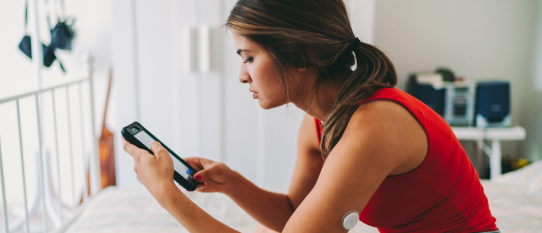
A sick day action plan is a written step by step guide to manage your diabetes when you’re sick.
Your diabetes health professionals (endocrinologist, diabetes specialist doctor, diabetes educator or nurse practitioner) can help you write your sick day action plan. Start using your plan as soon as you feel sick or notice any signs of illness.

Start following your sick day action plan as soon as you become unwell, have blood glucose levels above your target range or have signs of an infection or virus.
If your blood glucose level and the ketones in your blood or urine are higher than your target range, use your plan even if you don’t feel sick.
Tell a trusted adult, family member or friend you’re not feeling well. Let them know about your sick day action plan in case you need help. If possible, have someone stay with you or check on you frequently.
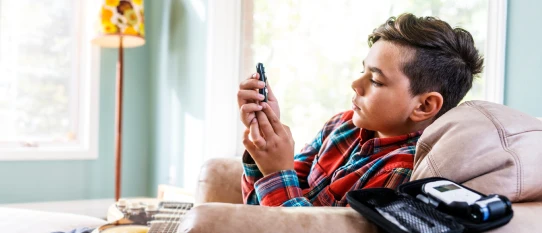
When you’re sick, check your blood glucose levels as your sick day action plan says (at least every 2-4 hours) until it’s back in the range your diabetes health professionals have recommend.
If you’re using continuous glucose monitoring (CGM) or flash glucose monitoring (Flash GM) to manage your diabetes, you may need to confirm the result with a finger prick check. Remember there is lag time between blood glucose levels recorded by a finger prick check and glucose levels recorded by a CGM or Flash GM.

You should check your blood or urine for ketones often (at least every 2-4 hours) when you’re unwell. Your sick day action plan should explain what action to take for what level of blood or urine ketones. This will help reduce your risk of developing diabetic ketoacidosis (DKA).
Your sick day action plan should include information about what to do with your insulin when you’re unwell. Your sick day action plan should include information to help you work out if you need to take extra insulin, and how much extra insulin you should take.
When you’re not feeling well, you might need extra insulin even if you aren’t eating much. Keep an eye on your blood glucose levels and your ketones to see if you need more insulin.
If you’re unable to eat or drink or have several episodes of vomiting and/or diarrhea lasting more than a few hours, you may need to reduce your insulin doses. Your sick day action plan should explain how to do this.
Remember to check that your sick day action plan includes details about changing your insulin amount or type when you’re sick. Reach out to your diabetes health professionals if you’re unwell and unsure of what to do about your insulin.

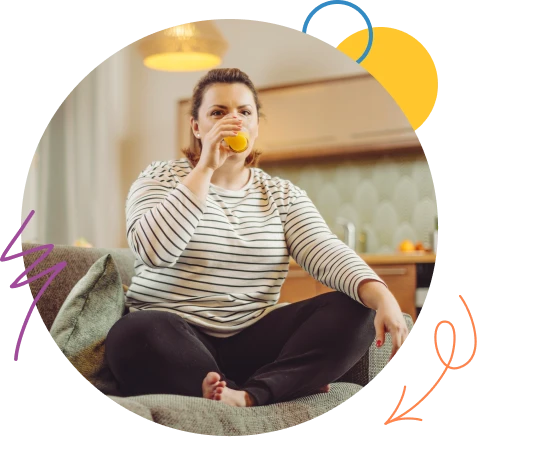
Drinking fluids and eating or drinking carbohydrates (carbs) when you’re not feeling well is very important. This helps you reduce the risk getting dehydrated or having low blood glucose levels (hypoglycaemia or hypo for short). Do your best to eat and drink like you usually do.
Try easy-to-handle drinks, snacks, or small meals, like toast, rice, crackers, mashed potatoes, or ice cream.
Aim to drink a cup (250 mL) of fluid every hour. Here’s what to drink based on your blood glucose levels:
If you’re vomiting or have diarrhoea, try rehydration drinks like Gastrolyte® or Hydrolyte® to help replace fluids and important minerals.
It’s very important to seek urgent medical care, speak to your doctor or go to your nearest hospital emergency department, if you’re unable to drink fluids, remain unwell or are unable to follow your sick day action plan.
It can be dangerous to exercise when blood glucose level is high or you have ketones in your blood or urine.
This means you don’t have enough insulin for your muscles to use glucose for energy. It can lead to rising blood glucose levels, a build-up of ketones and DKA.
If you feel unwell, it’s always a good idea to skip exercise until you feel better. Ask your diabetes health professionals to work with you to develop a plan for how to manage your diabetes when exercising.
Contact your doctor early to treat any illness or infection making you sick. Seek urgent medical attention if you show signs of DKA.
Signs and symptoms of DKA include:
Feeling drowsy, confused or weak
Deep, rapid breathing or shortness of breath
Tummy pain
A lot of vomiting or diarrhoea
Signs of dehydration such feeling extreme thirsty, dry mouth, weakness, confusion, and not peeing
Having a ‘fruity’ smell to your breath

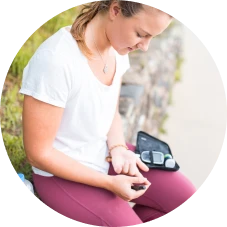

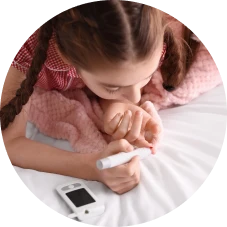
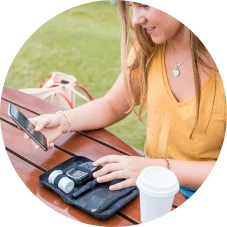
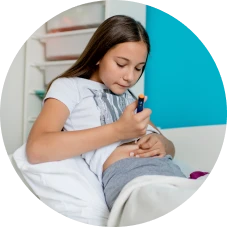



Having an up-to-date sick day kit means that it’s ready to use when you need it.
Check your sick day kit every 3 months to make sure it’s up to date and restock if you have used it.
The following items should be included in your sick day kit:
A copy of your sick day action plan
A blood glucose meter that can also monitor ketones
In-date blood glucose strips
In-date blood ketone strips (or urine ketone strips)
Your blood glucose diary or smartphone app to record your blood glucose readings
A thermometer
Pain relief medication
Food and drinks for sick days, for example Gastrolyte or Hydrolyte
Hypo treatment, including an in-date glucagon pen
Spare insulin pens and pen needles or syringes
Spare insulin pump consumables if you use an insulin pump, and your insulin pump backup plan
Telephone numbers for diabetes health professionals, support people and local hospital emergency department
A list of relevant medical information, for example, Medicare number, NDSS number, health insurance information and a notepad and pen to record all extra insulin doses, food/drink intake and glucose/ketone checks